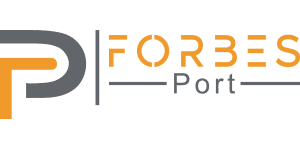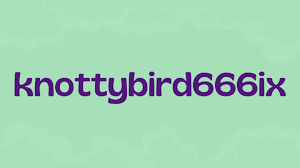Exploring ÓMMB: Milk Collection Network

Welcome readers! Today, we are delving into the fascinating world of ÓMMB Milk Collection Network.
Get ready to uncover the secrets behind this innovative system that ensures your favorite dairy products arrive fresh and deliciously on your doorstep every day. From clever technology to seamless supply chains, join us as we embark on a journey through the remarkable process that brings milk from farm to fridge in record time.
So grab a glass of milk and prepare to be amazed by ÓMMB’s Milk Collection Network like never before!
What is ÓMMB?
ÓMMB is a decentralized milk collection network that enables dairy farmers to sell milk directly to consumers. The network consists of a number of small-scale dairy farms that are connected to each other through the use of blockchain technology. This allows for the direct exchange of milk between farmers and consumers, without the need for intermediaries.
The ÓMMB network provides a number of advantages for both farmers and consumers. For farmers, it offers a direct link to consumers, which eliminates the need for middlemen and reduces costs. It also gives them more control over the price of their milk. For consumers, the ÓMMB network provides access to fresh, local milk that has not been processed or pasteurized.
How Does ÓMMB Operate?
The ÓMMB is a milk collection network that collects milk from participating farms and then transports it to a processing facility. The milk is then pasteurized and packaged for distribution to grocery stores, schools, and other customers. The ÓMMB is overseen by the Ontario Ministry of Agriculture, Food, and Rural Affairs (OMAFRA).
The ÓMMB was created in response to the need for a more efficient and organized milk collection system in Ontario. The old system was inefficient and often resulted in milk being wasted or spoiling before it could be processed. The ÓMMB has helped to improve the quality of milk produced in Ontario by ensuring that all milk is collected quickly and efficiently.
The ÓMMB operates on a voluntary basis, with participating farms agreeing to sell their milk to the network at a fixed price. The network pays for the transportation of the milk from the farm to the processing facility and also provides farmers with financial incentives for producing high-quality milk.
The ÓMMB has been successful in improving the efficiency of Ontario’s milk collection system and has helped to ensure that all milk is of high quality.
Benefits of ÓMMB
There are several benefits to ÓMMB, which include the following:
- ÓMMB provides a way for small-scale farmers to sell their milk directly to consumers, without having to go through the traditional (and often more expensive) channels of distributors and retailers.
- The network helps connect farmers with each other, as well as with potential customers, which can lead to increased business opportunities and higher profits for participating farmers.
- ÓMMB also provides education and training resources for its members, which can help them improve their milk production and marketing skills.
- By working together, members of ÓMMB can help create a stronger and more sustainable local food system that supports small-scale farmers and provides fresh, healthy milk products to consumers.
Types of Milk Donations Accepted
The ÓMMB milk collection network accepts both whole milk and skimmed milk donations. Each type of milk has different benefits for premature babies in the NICU, so donations of both are appreciated.
Whole milk is the best source of nutrition for premature babies and provides them with the calories they need to grow. It is also easy for their immature digestive systems to absorb. Skimmed milk is a good source of protein and essential vitamins and minerals, and can help babies gain weight more slowly, which is often helpful for those who are struggling to put on weight.
If you are interested in donating milk to the ÓMMB, please contact your local hospital or milk bank to find out what kind of donation they are able to accept.
Steps to Donating Breastmilk
There are a few key steps to donating breastmilk. First, it is important to find a milk collection network or bank that is accredited by the Human Milk Banking Association of North America (HMBANA). You can find a list of HMBANA-accredited milk banks here: https://www.hmbana.org/find-a-milk-bank/.
Once you have found a milk bank, you will need to fill out an initial screening form. This form will ask questions about your health history and breastfeeding journey. After the screening form has been completed, a milk bank representative will reach out to you to schedule a time for you to donate your milk.
When you are ready to donate, it is important to make sure that your breastmilk is clean and fresh. The best way to do this is by pumping directly into sterile containers that have been provided by the milk bank. Milk should be stored in a clean and cool environment until it can be delivered to the milk bank. Once at the milk bank, donors will need to provide a signed donor agreement form before their milk can be accepted.
Donating breastmilk is a selfless act that can provide nourishment and comfort to babies in need. We hope this guide has provided you with the information you need to get started on your donation journey!
Milk Collection Centers and Locations
The ÓMMB Milk Collection Network currently comprises 9 milk collection centers located across the state of Ohio. These collection centers are operated by independent milk haulers who are contracted by the ÓMMB.
The locations of the milk collection centers and their respective service areas are as follows:
- Columbus: servicing Columbus and surrounding areas
- Cincinnati: servicing Cincinnati and surrounding areas
- Cleveland: servicing Cleveland and surrounding areas
- Toledo: servicing Toledo and surrounding areas
- Akron: servicing Akron and surrounding areas
- Dayton: servicing Dayton and surrounding areas
- Lima: servicing Lima and surrounding areas
- Zanesville: servicing Zanesville and surrounding areas
- Youngstown: servicing Youngstown and surrounding areas
Alternatives to OMMB
There are many alternatives to ÓMMB, each with its own pros and cons.
Here are a few of the most popular options:
- Moxi: Moxi is a milk collection network that operates in a similar way to ÓMMB. It offers a mobile app for easy tracking of milk collections and also provides an online portal for data analysis and management. One key difference between Moxi and ÓMMB is that Moxi does not require farmers to sign up for a minimum number of years, making it more flexible for small-scale operations.
- Dairy Herd Share: Dairy Herd Share is an online marketplace that connects dairy farmers with herd share owners. Herd share owners purchase a portion of a dairy cow or goat, and in return receive a share of the milk produced by that animal. This arrangement allows for more direct relationships between farmers and consumers and gives consumers greater control over the source of their milk. However, it can be difficult to find reliable herd shares, and the cost of purchase can be high.
- Raw Milk Delivery: Raw milk delivery services provide consumers with access to fresh, unpasteurized milk from local farms. These services often have stricter quality standards than grocery store milk, and deliver milk directly to customers’ homes. This convenience comes at a higher price tag, however, as raw milk is typically more expensive than pasteurized milk.
- Milking Machines: Milking machines allow farmers to
Conclusion
ÓMMB has revolutionized the way milk collection is done. By leveraging technology, they have streamlined the process and created an easy-to-use platform that allows farmers to quickly collect and track their milk production from anywhere in India.
This new system not only provides a much-needed boost of efficiency for the dairy industry, but it also helps create economic opportunities for rural Indian communities by providing jobs and additional income for local farmers. With its success in India, ÓMMB is now looking to expand its operations to other countries around the world as well.




